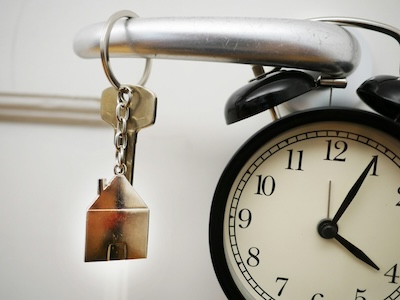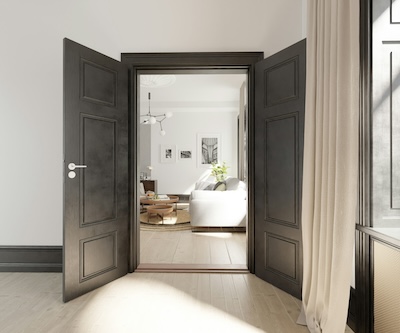
Hyresgäster
How-to Mini-Guide for Expats Moving to Sweden
Why move to Sweden?
Deciding to move to Sweden is a fantastic undertaking for many reasons. Sweden not only offers an exceptional quality of life but is also strongly committed to human rights and gender equality. These represent some of the cornerstones of Swedish values and life.
Stockholm is arguably one of the major international design capitals and finds expression in multiple artistic forms. Everything just looks nicer in Stockholm: from the green urban environment and natural landscapes to fashionable Swedes eating gorgeous, organically sourced food in trendy restaurants; whatever your reasons for coming, you’re in for an esthetic marvel and treat!
Innovation is extensive, with numerous tech firms constantly creating new waves for the rest of the world to awe and appreciate. Add the Swedish approach to work-life balance; healthcare for all and a welfare system that dishes out benefits and allowances to residents as well as employers, and no wonder people come from far and wide to make their home here!
So, what’s the catch? It’s finding an apartment in Stockholm, one of the foremost challenges faced by those who want to call Stockholm their home, and even more so if you’re looking for a quasi-permanent solution. The rental market here is reputed to be one of the toughest in Europe; one marked by rising rents, tenants forced to ride the merry-go-round of short-term sublets, moving again and again, often within months. Bribery to get one’s hands on a legal lease as well as scams of non-existent apartments are common and make for a thriving black market. Foreigners, regrettably, due to their unfamiliarity with the complex web of Swedish rental laws, run the greatest risk

Luckily, Samtrygg has created this how-to guide to your rescue. It includes an overview of the basics to improve you understanding of the market before in diving headfirst. The guide provides all the important things you need to know for navigating through the tricky ins-and-outs in finding a place to live. All major who, what, when, where, how and why questions are answered so you can confidently and successfully secure a place that you soon can call your home!
The preferred choice for ex-pats relocating to Sweden is the rental market. Hence, it is what this guide will concentrate on. However, to provide a bigger picture, the guide also gives you useful information about buying a home as well as securing temporary accommodation.
The basics of the Swedish rental market
Sweden’s rental market is a prime example of theory sharply contrasting with practice. In theory, apartments are regulated by a rental control system to keep the rent below what the market would dictate. These apartments have with “rent ceilings” or “rent caps” and are distributed by local municipalities or state-regulated rental agencies.
The problem is that there is an acute lack of rent-capped apartments to go around. The situation is much more dire in major cities, especially in Stockholm where two million people are clamoring for some 924,000 housing units. In fact, this severe housing shortage has prevailed over the past century, dating all the way back to 1902.
In 1917, the government took charge of the provision and building of homes for its citizens. In the 1960s, the national government implemented an official apartment waiting list that is still in use today. In reality, however, only 40 percent of those in line are lucky enough to land one of the few, exclusive, permanent, first-hand rental contracts (‘förstahandskontrakt’). It’s not uncommon to have to wait in line for 20 to 30 years! Consequently, the competition for sublet contracts (‘andrahandskontrakt’) has become fierce.
Because of this chronic housing shortage, a black market has emerged and has continued to flourish. Tenants rarely sue or file a report and thus the situation continues. In desperation, tenants are often forced to pay leaseholders large sums of money under the table to skip the long waiting lines. That, or they end up paying a lot more in rent than the sub-lessor is allowed to charge legally. Unfortunately, this is one of the most common traps foreigners fall into. A mark-up of 10-15 percent is allowed for a fully furnished apartment. However, charging exorbitant monthly rents is more the rule than the exception today.
In practice then, the market shows a continual rise in rents and recent research has indicated a 20-percent raise in some areas in two years. Prices can, however, vary wildly. To date, the monthly rent for a one-bedroom apartment in Sweden ranges between 3,000 and 15,000 kronor (equivalent to some $350 – $1,750).
If all this seems rather pessimistic, don’t despair! We’ll guide you through this tricky situation, helping you navigate your way to finding a place to live. Even if Sweden has failed to build enough new homes in recent years, strict regulations ensure that all properties maintain a high standard. When you do finally find a place to live, it will most certainly be well equipped and fully functioning, with modern kitchens, bathroom appliances and storage space to boot.
What are my options?
This guide describes four different options available and explains the pros and cons of each:
- Leasing an apartment with a leasing agreement contract
- Subleasing an apartment with a sublet contract
- Buying a home
- Finding temporary accommodation in the interim (buying you some time).
Renting
If you, like most, are not ready to buy a home anytime in the near future, renting is your best option. In Sweden, apartments are rented either on the basis of a first-hand lease or sublease rental contract.
That first-hand lease contract – exclusive as ever
A first-hand lease contract implies that the contract is in your name and signed between you and the owner or lessor of the building or home. These contracts are very attractive for two reasons: 1) They tend to be cheaper per month than a sublet contract. 2) They tend to be permanent, unless of course you breach the contract. However, because demand severely exceeds supply, you can only really get your hands on one if you’re willing to pay a large sum black; that, or register to get in line for local municipal housing (‘bostadskö’) and wait. The rule is, the larger the city, the longer the line. It’s quite common to have to wait several decades get your hands on a first-hand contract. You could, however, potentially get an apartment quickly if you’re willing to expand your search to include the suburbs and/or smaller towns.
The sublease contract – more feasible
If you’re uncomfortable with the idea of committing bribery (it is also illegal) or can’t stomach waiting in line for decades, nor are in the position to purchase a home, then the sublet rental market is the best choice for you. These contracts are used for two types of apartments: for ‘bostadsrätter’ e.g. apartments that are directly owned and ‘hyresrätter’ e.g. apartments for which the lessor holds the lease. Both types are covered by Swedish rental regulations (‘hyreslagen’). In 2013, the law separated the two, making bostadrätter an exception and allowing these more lenient regulations. This, however, has brought about an upsurge in the average rental price because owners now have freer hands than before in setting the level of rent to charge. Another effect is that rental prices now vary much more in the sublets market. In order to “sublet “or rent out one’s apartment, the tenant or owner must have a legitimate reason – for example moving abroad, trial living together with a partner or working/studying in another city. The sublease period usually does not exceed two years and is, in fact, often is shorter. It’s therefore quite common for short-term tenants to have to move from sublet to sublet, sometimes several times a year! However, there is an advantage to sublets: they’re relatively simple to obtain, do give you a chance to get started and buy you time to find a more suitable long-term solution.
Buying a Home
If you can’t land a first-hand contract and the thought of the sublet merry-go-round, is just too much, buying a property in Sweden might be the right alternative for you – of course, if you can afford it. As an owner, you’ll literally have complete and full ownership of the property. By definition, this means you’ve purchased the right to live in the home and in the case of an apartment, you own a share of the building. This gives you, along with the other residents, joint rights to make decisions about shared facilities and spaces, such as the courtyard and laundry room. You’ll also be paying a monthly maintenance fee (‘månadsavgift’). Although your expenses may seem to be piling up at this point, you normally end up paying less than you would for a monthly rental apartment. Furthermore, you’ll never have to worry about moving because you own the right to live there, nor do you have to worry about strange fees – it’s hassle-free.
Temporary Accommodation
If you’re finding it difficult to find a housing solution that meets your needs quickly, consider temporary accommodation to avoid rushing into a less advantageous alternative. There are lots of options here so it’s worth taking a look. 
HOW?
Once you’ve decided on the housing option you wish to pursue, you need to familiarize yourself with the steps involved in renting or buying a home, or finding a short-term solution. The guide will show you how to search for your selected preference.
Leasing
Your alternatives for getting a first-hand contract are: 1) Waiting in line 2) Heading for the suburbs where housing is easier to find, or the least desirable option: 3) Bribing a owner/lessor of the apartment.
Waiting in the Housing Line
If you’re searching for long-term apartments for rent in Stockholm or another major city, it can’t hurt to sign up for the official waiting list for first-hand lease apartments. Who knows; you might get lucky! Note that the lines are restricted to each municipality and while most are free of charge, Stockholm does charges an annual fee of 210 kronor. Click here for more in-depth information about the official waiting-list process. Click here to contact your municipality to find out how to sign up for your local housing waiting list. To register on the waiting list, you’ll need a Swedish Personal Identity number, similar to a civic registration or social security number in other countries. Besides being a huge help when landing an apartment, you’ll need this number for nearly all aspects of Swedish life. Once registered, you automatically become a part of the Swedish welfare system. Click here to read more about registering with the Swedish authorities.
Head for the Suburbs
Competition isn’t as intense for housing in the suburbs as it is in larger cities. You’re also likely to get more spacious housing for the same price as in major cities. Because all cities and bigger towns in Sweden offer safe and efficient public transportation – multiple subway lines, and/or 24-hour bus services and comfortable trains – the suburbs don’t seem as distant as they may perhaps do in your own country. To obtain a first-hand rental in the suburbs, you’ll still have to get in line but waiting times are normally significantly shorter. Sometimes you’re lucky enough to find your home almost immediately! To register for the waiting list, click here.
Bribe an Owner or Lessor
Obviously, we strongly advise against this as not only is it illegal but also extremely risky. “Black brokers” (‘svartmäklare’) often use intermediaries to collect the bribe and then disappear with no trace or receipt of the money transfer. Fake contracts for apartments in Stockholm or other popular cities may also be used to lure you. In other words, those who want bribes are usually setting you up for a scam. If you’re asked to pay a deposit or a monthly payment in advance before even viewing the apartment, walk away. This violates the proper procedure/order.
Subleasing
This should be your first choice if you want to rent an apartment in Stockholm, Gothenburg, Malmö or another popular city. In other words, due to the endlessly long first-hand waiting lines, you’re much more likely to get a sublet than a first-hand lease contract. If you decide to pursue a sublet contract: 1) Use a reputable, online rental service to start your search for rentals in Sweden or 2) Network with anyone and everyone: colleagues, friends, acquaintances, family, etc.
Online Rental Service
There are several free, online services that help you find sublets in Sweden. The more sophisticated sites allow you to create a personalized profile where you describe yourself so potential owners or lessors can learn a little about you. You can also select housing criteria. These sites will then match sublets to your preferences and save you the time of going though tons of ads manually every day. This way, you’ll be notified of a match so you can book a viewing directly and immediately, which dramatically increases your chances of finding an apartment in Sweden.
Samtrygg offers you a safe and easy-to-use sublet contract rental service. Bringing you over 200 new sublet apartments every month In addition, we guarantee paying up to 12 months of rent in the event you’re late with payments. We offer tailor-made safety insurance; covering most things a traditional home insurance would not cover. By using our service the risk of falling victim to a scam is minimized as we make sure to check the validity all lessors before inviting them to our site. In other words we are working to make the rental market safer, easier and better place. Instead of an entire apartment, you could also rent a room. This is often cheaper and sometimes easier to find. Besides, you could potentially have an invaluable cultural exchange if you get a nice apartment mate. Besides sublets, online rental services usually advertise apartment shares as well. 
Network
Swedes are usually a lot more comfortable with the thought of subletting their home to someone they know. Therefore networking is key and you should not limit yourself in your search. Ask everyone you know to inquire about housing opportunities. Even if you’re a friend of a friend or a friend’s colleague or acquaintance, you’re no longer a complete foreigner and this will lower the perceived risk and thus increase your chances. Furthermore, thanks to social media, today it’s never been easier to do so efficiently and with far more reach. So, you’d be silly not to put yourself out there, making connections fast and easily with owners and leaseholders. You could even ask your colleagues to post your ad on their internal company messaging boards!
Buying a Home
Buying or finding a home for sale normally requires the help of a real-estate agent (‘mäklare’). These are the go-to-people for any assistance about discovering, viewing, negotiating and buying homes. They tend to specialize in specific areas and types of accommodation. It’s worth taking the extra time to find the right ‘mäklare’ that fits your needs. Websites, such as boli.se and hemnet.se are good places to start browsing since they cover the entire country. This way, you’ll get a good initial picture of available properties and prices in various locations.
Temporary accommodation
The websites below are useful for finding a place to stay for the short term.
However, the pricing tends to be targeted at tourists and not expats on a budget. If you want something extremely economical, you should also consider Couch surfing, which is a global network of people who are prepared to open up their homes to travellers for short periods of time, cost-free. 
WHERE?
You probably already have an idea of your destination. This section describes the differences between urban and rural areas and how they vary in price and features. A studio apartment in Sweden can vary between 3,000 and 15,000 kronor/month. The price for one-bedroom Stockholm apartments can range between 8,000 and 15,000 kronor/month. These price variations predominantly reflect the trend in the capital. Other major cities, such as Gothenburg and Malmö, generally have a much lower price range. The rule, of course, is the further out, the cheaper it is. You should not be discouraged from looking outside the cities as the suburbs are also usually very nice and connected by a comprehensive public transportation system – some of the best in the world. The city center doesn’t have to be further than a comfortable 20 or 30-minute train ride away. If you’re looking for housing in smaller cities, suburbs, towns or the countryside, you’re much more likely to find cheaper and more spacious rentals. They’ll also be easier to get your hands on! 
WHEN?
There’s one simple answer to this question: Decide as soon and as well as in advance as possible of your move. Because of the tricky nature and fierce competition of Sweden’s rental market, we advise you to get on it – now. May we remind you to never hand over any money or sign a contract before having viewed the apartment due to the flourishing black rental market, it’s especially important that you confirm the apartment’s existence and check that the landlord is indeed who he/she claims to be. Ask a friend, co-worker or someone you know to go check it out for you if you’re not able to go yourself. 
WHO?
First of all, it may be useful to know that many of Sweden’s municipalities offer welcome services (‘invandrarservice)’. The staff at these centers can offer assistance in finding a place to stay. The easiest way to find out if the town you’re planning to settle in offers such services is to search on the Internet. Search “invandrarservice i” followed by the name of town in question. For example: “invandrarservice i Stockholm”. Secondly, you might want to know what the different actors are called in Swedish in the chain of your search. For rentals: Homeowner: Ägare Leaseholder: Hyresvärd Tenant: Hyresgāst Swedish Union of Tenants: Hyresgästföreningen Swedish Rent Tribunal: Hyresnämnden For purchasing your own home: Real-estate agent: Mäklare For any questions about subleasing laws or how to appeal issues concerning rentals in Sweden, turn to the Swedish rent tribunal (Hyrenämnden). For legal advice or advice on any other matter related to rentals, you can turn to the ‘Hyresgästföreningen’, the Swedish Union of Tenants. The fee is 85 kronor / month in Stockholm and 75 kronor / month in the rest of the country.
Last words of advice – Exercise caution!
Remember, never transfer or hand over any money – neither a deposit nor any advance rent payments – without first viewing the place in question. Nor should any money change hands before you have a legitimate contract drawn up, agreed upon and signed.
Draw up a written contract/tenancy agreement
Although there is no legal requirement to have a written contract, it is by far the safest way go about renting an apartment, especially if you should run into any problems and are subsequently in need of proving what you and your landlord/sub-lessor agreed upon. In addition, a written contract is also handy if you discover you’ve been paying more than the owner/lessor is legally allowed to charge. In this case, you can appeal to the Regional Rent Tribunal, where you can apply for compensation for the excess you’ve been charged.
Be proactive – Act Fast!
Housing options on the market go in the blink of an eye. If you don’t act immediately, you’ll run a great risk of losing it. When booking to view and deciding upon a place, do everything as soon as possible – the same day if possible. Even the next day may be too late. It’s therefore highly recommended that you have an informative letter or personal profile ready in advance so you can refer to it on the spot and present yourself. Sometimes the owner or the leaseholder will also want some complementary information about yourself, such as proof of employment and references from previous owners/lessors prior to their agreeing to sign the contract. Be ready in advance – just in case this is required!
Vocabulary
Familiarize yourself with some basic Swedish housing vocabulary as most housing ads still appear in Swedish. Apartment/flat: lägenhet Home: bostad Rental: hyreslägenhet Rent: hyra/hyr Lease: hyra ut i förstahand Let: hyra i förstahand Sublease: hyra ut i andrahand Sublet: hyra i andra hand Apartment/flat for rent in Stockholm: Hyra lägenhet i Stockholm Rent a room in Stockholm: Hyr ett rum i Stockholm Sublets in Stockholm: Lägenheter med andrahandskontrakt I Stockholm In Sweden, it is also common to list, apart from the kitchen and the WC/bathroom(s), the number of rooms in the apartment. If the apartment has two rooms, a kitchen and a bathroom, it’s typically listed in abbreviated form as “2rok” (2 rum och kök). Translated, the abbreviation stands for “two rooms and a kitchen.” Good luck!
We, at Samtrygg, wish you all the best in your search! If you need any assistance at all, Samtryggs Rental Consultants will be happy to help you! Contact information: Email: kundtjanst@samtrygg.se Telephone: +46 (0)10 884 80 00






